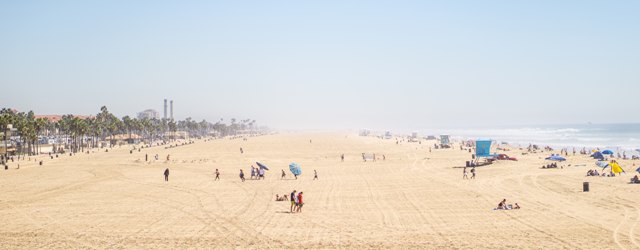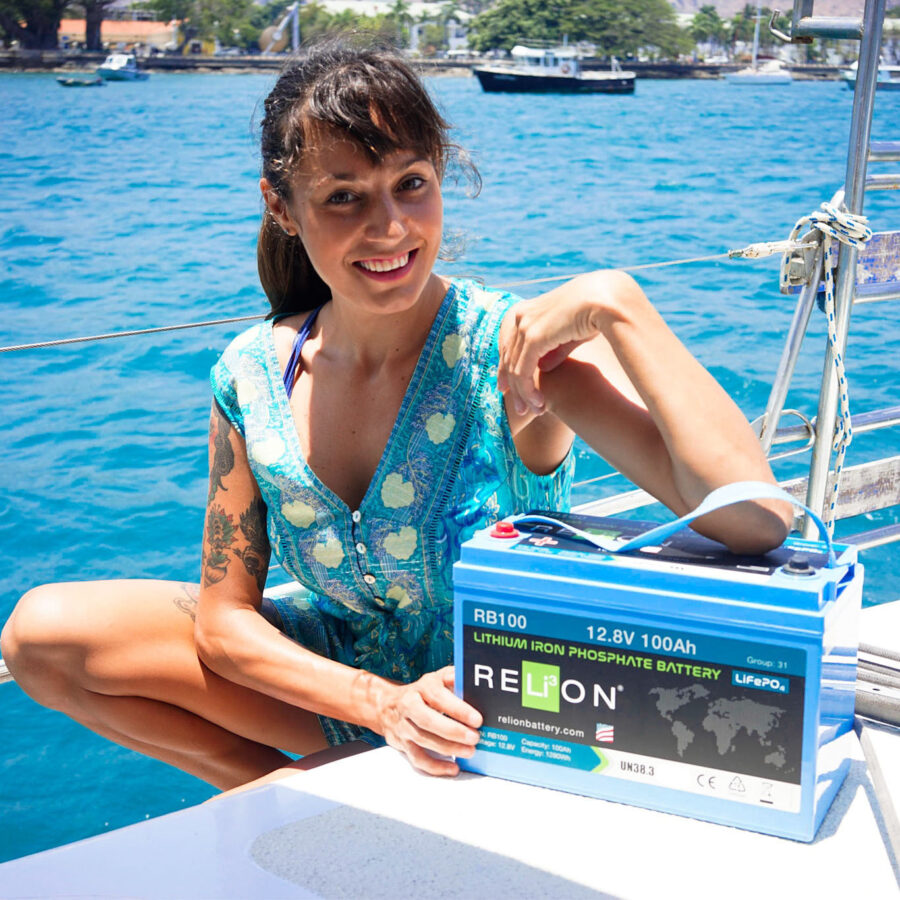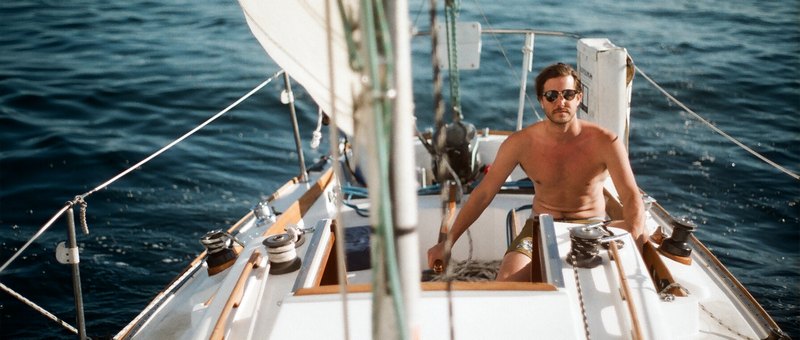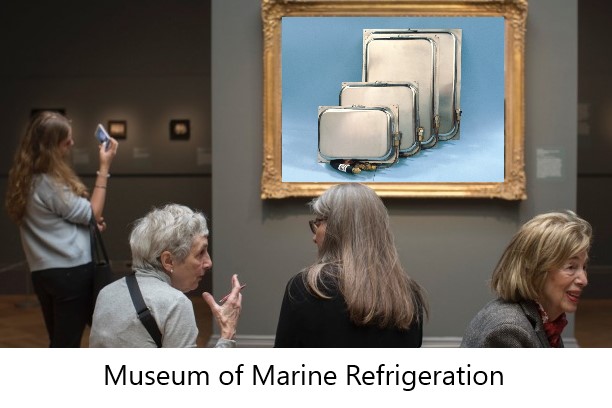Phone: (301) 352-5738
Email: info@CoastalClimateControl.com
Office | Warehouse:
1598 Whitehall Road, Suite D
Annapolis, Maryland 21409
Miami Heat
 We're between boat shows at Coastal Climate Control right now, having just survived the two very successful back-to-back sail and power shows here in Annapolis and now find ourselves busily packing the show crates for the Fort Lauderdale extravaganza. My first taste of exhibiting came at the Annapolis shows in the late 80's, and back then my employers’ preferred dress code was a tie and blazer for the blow-boaters followed by open-neck shirts and gold chains for the stink-potters. Oh, how times have changed!
We're between boat shows at Coastal Climate Control right now, having just survived the two very successful back-to-back sail and power shows here in Annapolis and now find ourselves busily packing the show crates for the Fort Lauderdale extravaganza. My first taste of exhibiting came at the Annapolis shows in the late 80's, and back then my employers’ preferred dress code was a tie and blazer for the blow-boaters followed by open-neck shirts and gold chains for the stink-potters. Oh, how times have changed!
Then in '95, with Coastal just three years old, I had the barmy idea of challenging myself to the logistical nightmare of exhibiting at the Miami International Boat Show, which back then was on Miami Beach. Having never set foot on Miami Beach, I sought advice on accommodations from my buddy Dave who, as a race-boat captain, had competed in many regattas based in South Beach. He told me that I absolutely must stay at his favorite, The Avalon Hotel on Ocean Drive, and that he would call and set things up for me. The Avalon sounded like the perfect place to relax quietly after a hard day at the show, so I duly booked a room and arranged parking for my van and trailer.
The trip down I-95 in my trusty but rusty Ford E150 hauling a 10' trailer went mostly according to plan, including a brief nighttime stop for a quick kip. But as I got further south and into Florida during the morning I found the gas pedal mysteriously having to go to the floor when tackling the hillocks caused by overpasses, and it seemed to be getting worse as the day wore on as ambient temperatures increased. Having plenty of time on my hands for in-depth analysis, I deduced that the problem must be an engine overheating issue that was having an increasing effect on performance the further south I went. The dashboard engine temperature gauge had also "gone south" a few years previously, so it was merely my deduction that the engine was overheating and leaning-out the fuel-air mixture too much, causing the loss of power.
Now that my sleep-deprived brain had worked out the problem, there seemed to be only one thing I could do to help cool the engine somewhat, and that was to turn on the heater in the cab. This did seem to help, especially when going slower than highway speed, so with the day rolling on I trucked on down I-95 in south Florida with the windows rolled down and the heater blasting away. Surprisingly, this was not a desperately uncomfortable situation, but there was a huge sense of relief late in the afternoon when I reached the exit for Miami Beach, where I envisioned I'd soon be rolling into the parking lot of the Avalon and then enjoying a cold beer by the pool.
Now, anyone who has been in Miami's South Beach in the evening knows that Ocean Drive, a two-lane street with restaurants, bars, and clubs on one side and the beach on the other, is a wild and noisy zoo of bar-hoppers, posers, and beautiful people, with cruisers (cars, not boats) thrown into the mix. There are also plenty of giddy (i.e. love-struck) couples and giddy (i.e. drunk) individuals meandering around aimlessly, and it is absolutely the very last place you'd want to end up in a van and trailer in the evening, but there I was, and getting many a strange look.
I soon found The Avalon, but instead of the expansive parking lot that I'd imagined, there was just a two-car pull-in, with one slot occupied by a classic old car that was clearly going nowhere fast. To the ire of the frustrated traffic held up behind me, I stopped in the street and pleaded with the concierge for help, but his mannerisms made it very clear that his main intent was to be rid of me, asap, by moving me on. Thankfully, I managed to explain that I was booked in to the hotel and that parking for my rig had been arranged, he told me to go around the block and he'd try to work something out. Just going around the block in South Beach in a van and trailer after sundown is not a simple or quick undertaking and definitely not advised, but I eventually made it back outside the Avalon again where the concierge said he'd come with me and take me to the parking lot, three blocks away. It wasn't so much the stress level that had me sweating so profusely, but more the fact that I was in south Florida with the van's heater on full-pelt, and as he climbed up into the passenger seat and was hit by the full-frontal blast of furnace-like air, the concierge slowly turned to me and asked; "You cold?”
That first Miami show went well for me, very well actually, as I recall I sold nearly 80 FX-1 air conditioning control retro-fit kits there. I had the van looked over at a local garage before heading back up north, but they couldn't find anything wrong, so I set off for home with the heater on full blast again, eventually being able to turn it off as the ambient temperatures receded and full power returned to the engine. It turns out that my assessment was almost correct, and all became clear when the van's fuel pump died a week after my return to Annapolis, most fortuitously just around the corner from my house. It seems that the fuel pump was already weak before my trip south and was giving reduced fuel flow. This presented no problems in cooler northern temperatures, but as things got hotter, the engine management system leaned-out the fuel mixture, already weakened thanks to the faulty fuel pump, with the resultant reduction in engine power.
Many boaters situated a good way north of Miami Beach may already be using their boat's air conditioning in reverse-cycle heat mode, ensuring that the water temperature is above 40F. While these units will put out an exceptional amount of heat at this time of year, around three times more than an electrical heater for the same power draw, there are some side effects to consider. While water contains a lot of heat right now and will reduce temperature gradually, the air temperature can drop rapidly in a short time prompting the need for heat in the cabin. Reverse-cycle heat pumps will often produce more heat than they can handle, and this can result in breakers tripping or high-pressure switches operating and shutting down the system. These nuisance service interruptions are due to the heat not being removed efficiently from the heat exchanger on the unit, causing a rise in refrigerant temperature and pressure above acceptable levels. Operating the fan at a low speed will not be helping the situation, nor will poor ducting or undersized discharge grilles, so best first try setting the blower on the highest setting.
The Coastal FX-1 control won't show any alarm if the high pressure switch operates in heat mode, unlike when in cool mode, due to it being such a common occurrence. Under a high pressure (HP) condition, the FX-1 will simply stop the compressor with no change in the display, sneakily hoping that you won't notice the stoppage before the pressures equalize and the compressor restarts itself. On most electronic marine air conditioning controls, the "Auto" fan speed option in heat mode will use a low fan speed normally, but will speed up the blower when the cabin temperature gets close to the set-point. This is in order to remove as much heat as possible from the heat exchanger before the set-point is reached and the compressor is stopped.
Operating marine reverse-cycle heat units in the Spring presents a different set of challenges. Although the water temperature should be above 40F, the air temperature and everything on board may be at a considerably lower temperature, including that great hunk of metal that is the air conditioning compressor. The rotary type of compressors used almost universally in small marine air conditioners circulates the hot compressed gas around the shell of the compressor before it finds its way out via the tubing and around the system. In normal running conditions the compressor shell will be extremely hot and you'd be well advised not to touch it (which means that you probably just did …). But when starting the system in cold conditions, any heat there is in the compressed refrigerant gas will immediately have it sucked out by the cold steel of the compressor shell, seriously reducing the capacity of the unit to produce the cozy, comforting effect we're hoping for. This state of affairs will continue until the compressor shell gradually heats up and some heat effect is felt from the air discharge(s), and can easily take 30 minutes or more. So, while you wait for the heat to start pumping, you'd best make a cup of hot tea or coffee and think warm thoughts. Try imagining that you're driving around south Florida with the car's heater going full blast. But then what idiot would do that?
There was no swimming pool at The Avalon, and it wasn’t quite the peaceful haven I’d imagined, but I enjoyed staying there and did so for many of the following years. Dave is still my buddy, although I tend to thoroughly check out any of his recommendations these days.
By accepting you will be accessing a service provided by a third-party external to https://www.coastalclimatecontrol.com/






